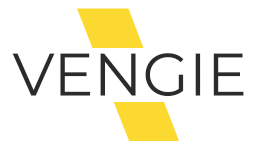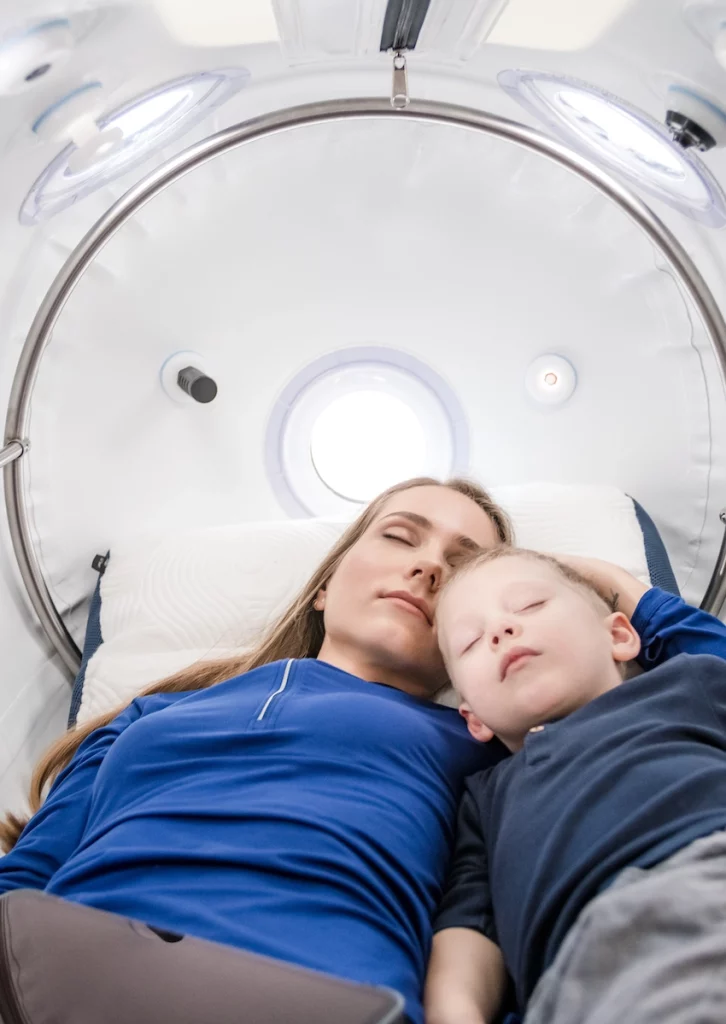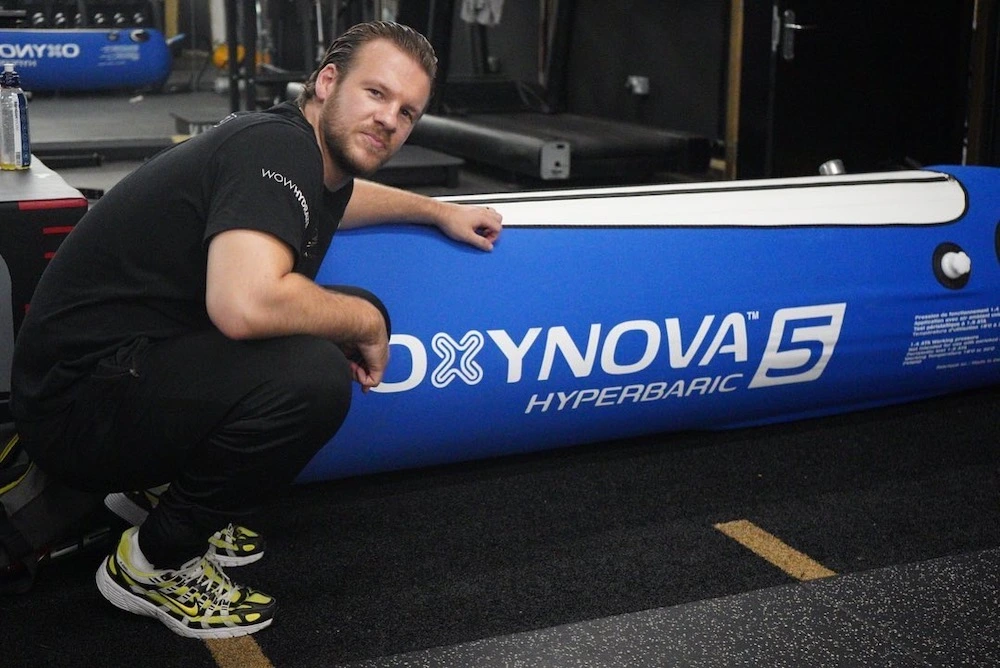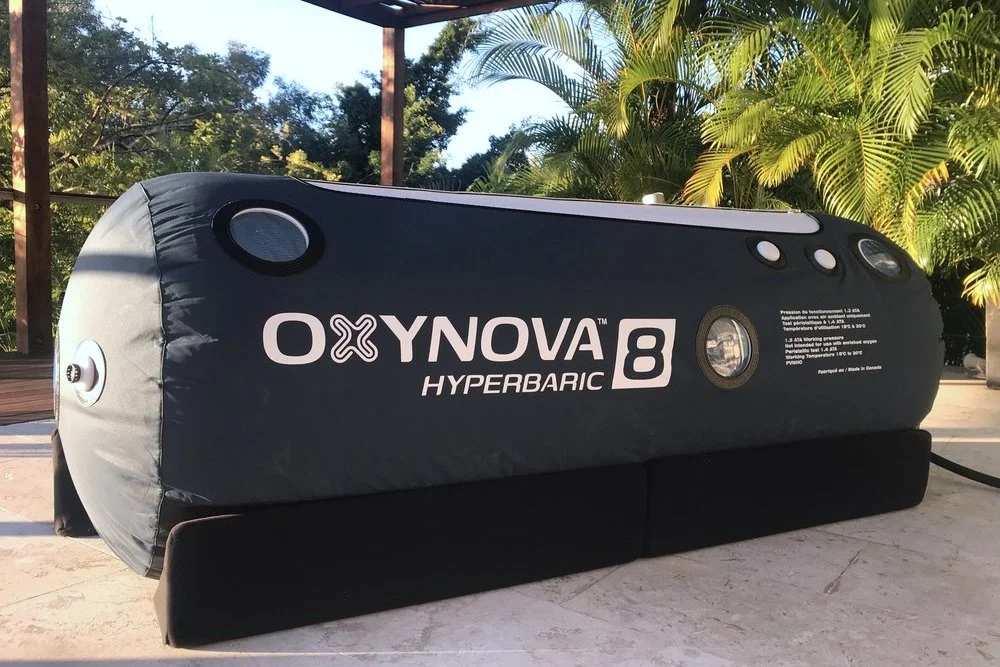Table of Contents
What is HBOT Therapy?
Hyperbaric Oxygen Therapy (HBOT therapy) stands at the forefront of modern medical innovation, offering a unique approach to healing and recovery. As its popularity grows, understanding the intricacies of HBOT in Ireland becomes increasingly essential. In this comprehensive guide, we delve into the depths of HBOT therapy, exploring its mechanisms, medical applications, research evidence, practical aspects, and future prospects.
Brief Overview of HBOT Therapy
Hyperbaric Oxygen Therapy involves the administration of 100% oxygen at increased atmospheric pressure within a specially designed chamber. This environment allows for the dissolution of oxygen into the bloodstream at higher concentrations than normal, facilitating enhanced oxygen delivery to tissues throughout the body.
Importance of Understanding Its Mechanism and Applications
While HBOT therapy has been utilized for decades, its mechanisms of action and wide-ranging applications continue to be elucidated through ongoing research. Understanding how HBOT works and its potential benefits is crucial for both healthcare professionals and patients alike.
Preview of the Topics to be Covered
Throughout this guide, we will explore the fundamentals of HBOT in Ireland, its medical applications across various conditions, the research supporting its efficacy, what to expect during HBOT sessions, and the exciting possibilities for its future. By the end, readers will gain a comprehensive understanding of HBOT and its role in modern medicine.
Understanding Hyperbaric Oxygen Therapy (HBOT)
Hyperbaric Oxygen Therapy (HBOT therapy) is a medical treatment that involves breathing pure oxygen in a pressurized chamber. This section aims to provide a deeper understanding of HBOT by exploring its definition, historical background, mechanisms of action, and the different types of hyperbaric chambers available.
Definition and Basic Principles
HBOT involves exposing the body to 100% oxygen at pressures greater than atmospheric pressure (typically 1.4 to 3 times higher). This increased pressure allows for a greater amount of oxygen to dissolve in the bloodstream, resulting in higher oxygen levels in tissues throughout the body.
Historical Background and Development
The use of hyperbaric chambers for therapeutic purposes dates back to the 1600s when compressed air was used to treat various medical conditions. However, the modern development of HBOT therapy began in the mid-20th century with advancements in technology and understanding of its physiological effects.
How HBOT Works: Mechanisms of Action
- Increased Oxygen Delivery: Higher pressures in the chamber result in greater oxygen dissolution in plasma, leading to increased oxygen delivery to tissues, even in areas with compromised blood flow.
- Enhanced Tissue Oxygenation: Oxygen at high pressure can penetrate deeper into tissues, promoting healing and regeneration in areas with inadequate oxygen supply.
- Regulation of Inflammation and Immune Response: HBOT can modulate inflammatory processes and enhance the body’s immune response, contributing to the resolution of various medical conditions.
Types of Hyperbaric Chambers
There are different types of hyperbaric chambers used for HBOT in Ireland, including monoplace chambers (designed for one person), multiple chambers (can accommodate multiple patients simultaneously), and portable chambers (smaller chambers for individual use). Each type has its own advantages and is suitable for different clinical scenarios.
By understanding these fundamental aspects of HBOT, one can appreciate its therapeutic potential and diverse applications in clinical practice.
Medical Applications of HBOT
Hyperbaric Oxygen Therapy (HBOT) has shown effectiveness in treating a wide range of medical conditions across various specialties. This section explores the diverse applications of HBOT therapy, including wound healing, neurological conditions, carbon monoxide poisoning, and other medical emergencies.
Wound Healing
- Diabetic Foot Ulcers: HBOT promotes wound healing in diabetic patients by improving tissue oxygenation, enhancing collagen synthesis, and reducing inflammation.
- Non-healing Wounds: HBOT accelerates the healing process in chronic, non-healing wounds by stimulating angiogenesis, increasing fibroblast proliferation, and combating infection.
- Radiation Injury: HBOT therapy mitigates tissue damage caused by radiation therapy by improving tissue oxygenation, reducing inflammation, and promoting the regeneration of healthy tissue.
Oxygen Toxicity
- Risks and Precautions: HBOT therapy carries the risk of oxygen toxicity, which can manifest as central nervous system and pulmonary oxygen toxicity. Proper monitoring and adherence to treatment protocols are essential to minimize these risks.
- Management Strategies: Monitoring of oxygen levels, adjusting treatment protocols, and providing antioxidant supplementation are among the strategies used to manage oxygen toxicity during HBOT.
Neurological Conditions
- Stroke: HBOT shows promise in improving neurological outcomes in stroke patients by reducing brain edema, enhancing neuroplasticity, and promoting the recovery of ischemic tissue.
- Traumatic Brain Injury (TBI): HBOT has been studied as a potential therapy for TBI, with evidence suggesting benefits in reducing inflammation, improving cognitive function, and enhancing neuroregeneration.
- Neurological Rehabilitation: HBOT therapy may complement traditional rehabilitation strategies by promoting neuroplasticity, enhancing motor function, and improving cognitive abilities in patients with neurological deficits.
Carbon Monoxide Poisoning
- Mechanism of Action in Detoxification: HBOT accelerates the elimination of carbon monoxide from the bloodstream by increasing the partial pressure of oxygen, thereby displacing carbon monoxide from hemoglobin and promoting its exhalation.
- Treatment Protocols: Prompt initiation of HBOT therapy is crucial in the management of carbon monoxide poisoning to prevent long-term neurological sequelae. Hyperbaric oxygenation is considered the gold standard therapy for severe cases of carbon monoxide poisoning.
Other Conditions
- Decompression Sickness (DCS): HBOT is the primary treatment for DCS, a condition that occurs in divers due to rapid changes in ambient pressure. HBOT helps to eliminate inert gases from tissues, relieving symptoms and preventing further complications.
- Gas Gangrene: HBOT adjunctive therapy for gas gangrene enhances tissue oxygenation, promotes bacterial killing, and augments the effectiveness of antibiotics in eradicating infection.
- Air or Gas Embolism: HBOT facilitates the reabsorption of air or gas emboli from the bloodstream, reducing the risk of vascular occlusion and tissue ischemia.
By addressing these medical conditions through HBOT therapy, healthcare providers can offer patients a non-invasive and effective therapeutic option with the potential to improve outcomes and enhance quality of life.
Research and Evidence Supporting HBOT
Hyperbaric Oxygen Therapy (HBOT) has garnered significant attention in the medical community, with a growing body of research supporting its efficacy and therapeutic benefits. This section delves into the scientific evidence underpinning HBOT, including clinical trials, meta-analyses, systematic reviews, and emerging trends in research.
Clinical Trials and Studies
- Randomized Controlled Trials (RCTs): Numerous RCTs have investigated the efficacy of HBOT across various medical conditions, including wound healing, neurological disorders, carbon monoxide poisoning, and others. These trials have provided valuable insights into the clinical effectiveness of HBOT therapy and have contributed to its widespread adoption in clinical practice.
- Observational Studies: Cohort studies and case series have further elucidated the real-world effectiveness of HBOT in diverse patient populations, offering valuable insights into its clinical utility and outcomes in routine clinical practice.
Meta-analyses and Systematic Reviews
- Meta-analyses: Meta-analytical studies pooling data from multiple RCTs have provided robust evidence supporting the efficacy of HBOT in specific medical conditions, such as diabetic foot ulcers, radiation injury, and carbon monoxide poisoning. These meta-analyses offer a comprehensive overview of the collective evidence base and help guide clinical decision-making.
- Systematic Reviews: Systematic reviews systematically synthesize and appraise the available evidence on HBOT, providing clinicians with a critical appraisal of the literature and highlighting areas of consensus and controversy. These reviews serve as valuable resources for evidence-based practice and inform clinical guidelines and recommendations.
Current Trends in HBOT Research
- Novel Applications: Ongoing research is exploring novel applications of HBOT beyond its traditional indications, including autoimmune disorders, neurodegenerative diseases, sports-related injuries, and psychiatric conditions. These emerging areas of research hold promise for expanding the therapeutic repertoire of HBOT therapy and addressing unmet medical needs.
- Mechanistic Studies: Advances in basic science research are elucidating the underlying mechanisms of HBOT, including its effects on cellular metabolism, gene expression, neuroplasticity, and immune modulation. These mechanistic insights deepen our understanding of HBOT’s therapeutic effects and pave the way for targeted interventions and personalized medicine approaches.
By synthesizing the wealth of research evidence supporting HBOT, healthcare providers can make informed decisions regarding its integration into clinical practice, optimize treatment protocols, and improve patient outcomes. Continued research efforts will further refine our understanding of HBOT and unlock its full therapeutic potential across a spectrum of medical conditions.
The Future of HBOT
Hyperbaric Oxygen Therapy (HBOT) has established itself as a valuable therapeutic modality with a wide range of applications across various medical specialties. This section explores the evolving landscape of HBOT therapy, including advances in technology, potential expansion of indications, and its integration with other medical therapies.
Advances in Technology and Research
- Hyperbaric Chamber Design: Ongoing advancements in hyperbaric chamber technology aim to enhance patient comfort, optimize treatment delivery, and improve safety. Innovations such as integrated monitoring systems, automated control algorithms, and ergonomic chamber designs contribute to the overall efficacy and efficiency of HBOT.
- Hyperbaric Oxygen Delivery Systems: Research into novel oxygen delivery systems, such as hyperbaric oxygen tents and portable devices, seeks to expand access to HBOT beyond traditional clinical settings. These innovations may offer greater flexibility in treatment delivery and facilitate home-based or remote HBOT administration.
Potential Expansion of Indications
- Emerging Therapeutic Areas: Research efforts are exploring novel applications of HBOT in conditions beyond its traditional indications, including autoimmune diseases, neurodegenerative disorders, psychiatric conditions, and sports-related injuries. Preliminary evidence suggests potential benefits in modulating inflammatory responses, promoting tissue repair, and enhancing neuroplasticity in these diverse clinical contexts.
- Personalized Medicine Approaches: Advancements in precision medicine and molecular profiling may enable the identification of patient subgroups that are most likely to benefit from HBOT. Tailoring treatment regimens based on individual genetic, metabolic, and immunological profiles holds promise for optimizing therapeutic outcomes and minimizing adverse effects.
Integration with Other Medical Therapies
- Combination Therapies: HBOT therapy is increasingly being integrated into multimodal treatment approaches, where it complements and synergizes with other medical therapies, including surgery, pharmacotherapy, radiation therapy, and physical rehabilitation. Combined interventions may enhance treatment efficacy, accelerate recovery, and improve overall patient outcomes.
- Collaborative Care Models: Interdisciplinary collaboration among healthcare providers, including hyperbaric medicine specialists, surgeons, oncologists, neurologists, and rehabilitation therapists, fosters comprehensive care coordination and facilitates the seamless integration of HBOT into holistic patient management plans.
As research continues to unravel the complexities of HBOT and its mechanisms of action, the future holds promise for further innovation, expanded indications, and enhanced integration with existing medical therapies. By embracing these advancements, healthcare providers can harness the full potential of HBOT to improve patient care, advance medical knowledge, and transform the landscape of modern medicine.
Conclusion
Hyperbaric Oxygen Therapy (HBOT) represents a cornerstone of modern medicine, offering a potent therapeutic approach with diverse applications across a spectrum of medical conditions. As we conclude this exploration into the world of HBOT, it is evident that its potential for healing and recovery knows few bounds.
Recap of the Benefits and Applications of HBOT
- Healing and Regeneration: HBOT enhances tissue oxygenation, promotes angiogenesis, and modulates inflammatory responses, facilitating wound healing, tissue repair, and regeneration.
- Neurological Support: HBOT shows promise in improving outcomes in neurological conditions, including stroke, traumatic brain injury, and neurodegenerative disorders, by enhancing neuroplasticity and neuroprotection.
- Toxicity Management: HBOT serves as a cornerstone therapy for carbon monoxide poisoning, decompression sickness, and gas gangrene, accelerating the elimination of toxins and promoting tissue recovery.
- Future Potential: Ongoing research into novel applications, technological innovations, and personalized medicine approaches holds promise for expanding the therapeutic repertoire of HBOT and optimizing treatment outcomes.
Encouragement for Further Exploration and Research
- Scientific Inquiry: Continued research efforts are essential to deepen our understanding of HBOT’s mechanisms of action, refine treatment protocols, and explore its potential in emerging therapeutic areas.
- Clinical Innovation: Healthcare providers are encouraged to embrace HBOT as a valuable adjunctive therapy, integrating it into multimodal treatment approaches and collaborating across disciplines to optimize patient care.
- Patient Advocacy: Empowering patients with knowledge about HBOT, its potential benefits, and realistic expectations fosters informed decision-making and enhances engagement in the treatment process.
Closing Thoughts on the Future of Hyperbaric Oxygen Therapy
Hyperbaric Oxygen Therapy stands at the nexus of innovation and healing, poised to shape the future of healthcare through its transformative potential. As we embark on this journey forward, let us continue to explore, innovate, and collaborate, harnessing the power of HBOT to improve lives, advance medical science, and usher in a new era of healing and hope.
In closing, let us embrace the promise of HBOT and the boundless possibilities it holds for the future of medicine. Together, we can unlock its full potential and chart a course toward a healthier, more resilient world. read also about online weight loss programs in Ireland.














